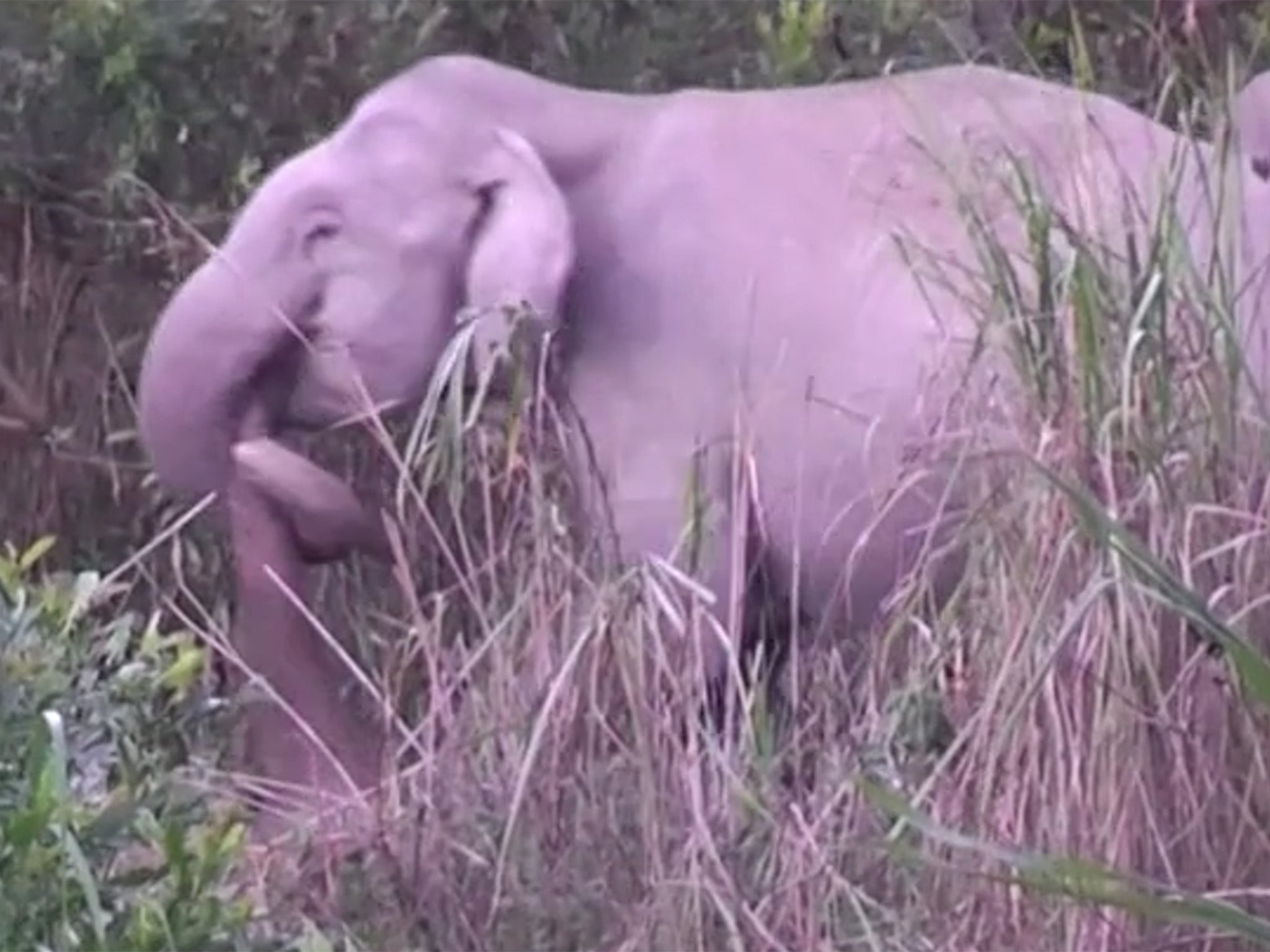Elephants in mourning seen kicking and dragging dead herd members
First study into Asian elephant death rites was conducted on YouTube
Your support helps us to tell the story
From reproductive rights to climate change to Big Tech, The Independent is on the ground when the story is developing. Whether it's investigating the financials of Elon Musk's pro-Trump PAC or producing our latest documentary, 'The A Word', which shines a light on the American women fighting for reproductive rights, we know how important it is to parse out the facts from the messaging.
At such a critical moment in US history, we need reporters on the ground. Your donation allows us to keep sending journalists to speak to both sides of the story.
The Independent is trusted by Americans across the entire political spectrum. And unlike many other quality news outlets, we choose not to lock Americans out of our reporting and analysis with paywalls. We believe quality journalism should be available to everyone, paid for by those who can afford it.
Your support makes all the difference.Elephants in mourning have been observed nudging, kicking and dragging their dead herd members.
A group of researchers conducted a study into how the Asian elephant responds to death using crowdsourced videos on YouTube.
The most common reactions included sniffing and touching – some elephants would rest their trunks on the face of a carcass, others used their legs to shake one.
Elephants would often make noise in response to a death and groups would sometimes gather around a carcass trumpeting or roaring in cacophony.
Other behaviour was seen more rarely. On three occasions, mothers repeatedly kicked their dead or dying calves.
Female elephants were also seen dragging around carcasses by their trunks. The scientists said this could suggest an awareness that the dead can no longer move for themselves.
Their study was published on Wednesday in the Royal Society journal. It details the various thanatological responses – or death-related behaviours – observed on dozens of open source videos, mainly on YouTube.
Dr Sanjeeta Pokharel, lead author of the study, said she first witnessed Asian elephants repsonding to death in 2013.

An older female elephant had died of an infection and a younger female was walking in circles around the carcass. Fresh piles of dung suggested other elephants had recently visited.
“That is where we got curious,” Dr Pokharel, a biologist with the Smithsonian Conservation Biology Institute, told The New York Times.
Some of the behaviour they saw was before only known anecdotally. Dr Pokharel said: “There were stories about it, there was newspaper documentation, but there was no scientific documentation.”
One response to death, the carrying of infant caracasses, “was quite surprising”, Dr Pokharel said. The scientists observed five adult females carrying around the bodies of young dead elephants.
This behaviour is shared with other mammals. Researchers have seen it in monkeys and great apes as well as whales and dolphins.
The nature of elephants’ understanding of death has been a popular point of discussion in recent years. The giant mammals are thought to have among the most complex emotional relationships in the animal kingdom.
Several studies of African elephants showed they had strong interest in dead members of their species, regardless of relation.
The latest study is the first to focus on Asian elephants, Dr Pokharel said.
Join our commenting forum
Join thought-provoking conversations, follow other Independent readers and see their replies
Comments